Caroline Leavitt's Blog, page 105
October 7, 2012
Carolyn Roy-Bornstein talks about Crash, grief, gratitude, family, and more
Crash: A Mother, a Son, and the Journey from Grief to Gratitude is Carolyn Roy-Bornstein's haunting memoir of how her life changed after her 17-year-old son Neil was hit by a teenaged drunk driver while walking his girlfriend home. Faced with such a shattering event, she became an expert in traumatic brain injury, even as she grapples with her son's memory loss and changed personality. I'm honored to have her here writing about her experience. Thank you so much, Carolyn.
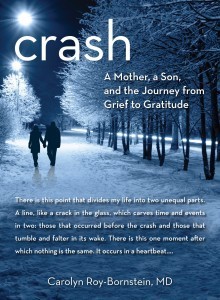
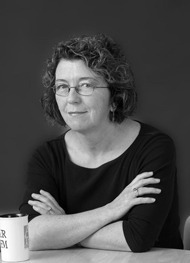
L’dor vador Ten years ago my son Neil, then 17, sustained a traumatic brain injury at the hands of a drunk hit-and-run driver in a crash that killed his girlfriend. Five years ago, I started writing a book about it. Last month, Crash: A Mother, a Son, and the Journey from Grief to Gratitude was published by Globe Pequot Press. My parents would have been very proud of their youngest daughter. Unfortunately they didn’t live to see me become a published author. Then again, they also didn’t live to experience Neil’s accident, which might well have killed them on the spot. My in-laws also did not live to see the book come to fruition. My father-in-law died before his son and I were even married (though he did tell me on his death-bed that he knew I would be a good wife to his son, which I hope I have been.) My mother-in-law knew I had finished writing the book, but passed away before I had found a home for it. So as I give book readings and interviews, I think about my parents and parents-in-law a lot. I wish they were all alive to see me read, watch me on TV or hear me on the radio. I know my father would be bragging to all his golf buddies about his author-daughter. There is no love more unconditional than a dad’s for his little girl. And my mother-in-law Sylvia would still be non-stop kvelling.) There is a Hebrew phrase L’dor Vador which means “from generation to generation.” This phrase comes during the part of the Jewish Sabbath service where we all are instructed to teach our children about our religion. But I have used it in my daily life as a mantra, a kind of short-hand for what I believe in: the power of family. So now as I give readings and interviews, I may not be able to bring that previous generation of family with me. But I try to do the next best thing. On my pub date, I exchanged my mother’s wedding ring for my own. Curling my fingers around the gold band carved with flowers, I felt her presence with me. For my book launch party and my first TV interview, I wore the beautiful suits my very chic mother-in-law bought me many years ago. They are not out of style because she was such a visionary fasionista. I try to wrap myself in the love I know they would have showered on me is they were here. And I think: L’dor Vador.
Published on October 07, 2012 13:02
New feature: Interviewing the Indies!
I'm thrilled and excited to announce a new feature. I'm going to start interviewing indie booksellers. First up is Jackie Blem from Tattered Cover. If you have a favorite indie, let me know.
Stay tuned!
Stay tuned!
Published on October 07, 2012 10:52
October 6, 2012
Jeff Lyons talks about making movies, specifically his Billy Miske: Dead Man Fighting
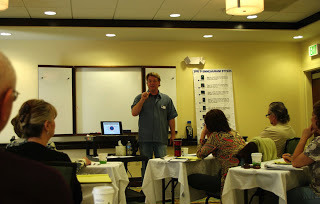
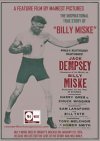
I first met Jeff Lyons in one of my UCLA novel writing class and we almost instantly became friends. Since then, Jeff's mentored my scripts, helped me with story structure (I can't imagine writing a novel without him) and is such an integral part of my life, that if he left the planet, I'd have to go after him and bring him back. A regular guest lecturer at the UCLA Extension Writers Program, as well as a webinar instructor for The Writers Store and Writer's Digest University, he's also the founder of Storygeeks, a professional services company offering story consulting, training and editorial services to screenwriters, novelists and nonfiction authors. More information can be found on his website, storygeeks.com. Follow @storygeeks on Twitter and “like” Storygeeks on Facebook. In 2012, he will be publishing an e-book entitled Anatomy of a Premise Line: 7 Steps to Foolproof Premise and Story Development.
But most excitingly, Jeff has a movie deal for a script he wrote, Billy Miske: Dead Man Fighting. Thanks so much, Jeff, for coming on here!
Can you tell us about the story?
The movie is called Billy Miske: Dead Man Fighting. Miske was a boxer in the mid-1920s from Minneapolis-St. Paul. He was a contender for the heavyweight title against Jack Dempsey, who’d he’d fought many times. Billy was secretly dying from kidney disease and ended up betting his life on one last, winner-take-all fight in order to secure his family’s future before he died. It’s one of the last, great, untold American sports stories. And, it’s a Christmas movie—as it all takes place over the Thanksgiving, Christmas and New Years holidays in 1924—1925.
So, who’s making it into a movie?
The production is going to be a U.K. production through M4West Pictures Ltd. in London. Rebecca Tranter is the lead producer there, with Stephen David Brooks producing in the U.S. It’s ironic that a U.K. production company is telling this archetypal-American sports story, but there it is. What got them, I think, hooked on this was the love-, family-story aspect, and the fact that this is, as I said earlier, one of the great untold American sports stories. Plus, boxing is a huge sport in Britain and Ireland.
What was the aspect of the story that really struck you personally and made you want to write the script?
Two things: first that it actually happened, and second that this man literally sacrificed his life to save his family in such a public way. Also, I loved the flawed nature of the man. Understand, Billy Miske was no hero; he was a driven man who lied to his wife and family for years, hiding his condition so that he could box. If the boxing world had known he was sick, Miske would not have been able to get his grandmother to fight him in the ring. His career would have been over, and so his dream of getting the world championship. It was only after life handed him and his family a sack of dirt that he was forced to step up and make the ultimate sacrifice. But, he did it. He found his higher principles and became a hero by changing as a man. That’s the stuff of great drama and that makes great movies.
What was it like to write this script—pulling teeth or pulling taffy?
Actually, neither. The writing process on this was kind of magical; the kind of script writers dream about. I wrote this in five weeks and later drafts were very minor. Almost no changes. It just poured out fully formed. I’d been thinking about it for a long time, especially about the story structure, so I’m sure I did a ton of writing subconsciously, but there was also the feeling that there was an unseen hand working. So, when writers say, “The story wrote itself,” they’re not joking. It really happens.
One thing that anyone creative needs to understand is that these things can take a LONG time. Tell us about the trajectory of your movie. Where'd the idea come from?
Billy’s story came to me through an old friend, who is no longer with us, sadly. He was a producer and he was thinking of doing a movie himself (this is back in 1998). But, he never did anything with it. We knocked the story around for a little while, and I kind of just kept thinking about it for years, after my friend had moved on. It never let go of me. I finished the script in 2005, just after Cinderella Man was released. Russell Crowe and Ron Howard were not my favorite people that year. Almost universally the response was, “Great writing, great story … but too much like Cinderella Man. Pass.” It was one of those pitching nightmare scenarios. Everybody saw the value, recognized the good story and the good script, but were unable to see past their noses. It’s nuts. Even if they bought my script it would take two years to get it into theaters. Cinderella Man would have been ancient movie history. But, no, producers just weren’t able or willing to see past Cinderella Man’s theatrical release window OF THREE WEEKS! It was crazy making. And the fact is, I didn’t keep going. I shelved the project and it stayed in my “drawer” until I got that phone call from Stephen David Brooks in May 2012 telling me to, “Mail Rebecca Billy Miske—now.” Stephen and I are writing partners, and it just so happened that he had gotten attached to a directing project (The Second Sight of Father Cooper) through Rebecca Tranter in the U.K. (M4West Pictures Ltd.). Stephen told Rebecca about Billy Miske and it just took off from there. Fortunately, Rebecca saw the potential of the story and loved the writing. It all came together quickly after that. That’s how it always happens. Unexpected, unpredictable, and totally out of the blue.
The film is based on a true story--but when you are dealing with story structure, you often have to twist things to make the story resonate. Did you? And how?
Yeah, biopics are problematic, as are “true story” nonfiction books. With this story I couldn’t find the way in. All the angles I took were boring and “life story” dull. I then decided to adopt that old writing adage, “never let the facts get in the way of a good story.” As soon as I realized that staying true to history was a straightjacket, that’s when the story came to me. I’m not saying I reinvented Billy’s history or fight record. No, some facts have to remain faithful, but the personal story, the marriage, and the family stories could be played with to augment to drama and the man himself. I made up a lot of the supporting characters and situations, while remaining accurate to the big picture. I think it paid off. But, your question is a great one, because writers have to grapple with this all the time. The bottom line is that story is story. Just because something happened (historically or in one’s life), doesn’t mean it will make a good story. As movies, “based on” kinds of stories still have to be entertaining and tell a good story that you can present in a couple hours. Adaptation is just that, adapting—not cloning. As a writer you are creating a whole, new work when you adapt something. Some facts are at service to the story, others are not. Big historical facts have to stay the same so you don't look stupid, but everything else is at service to the adapted story. It’s not about telling the facts, it’s about telling the truth, and sometimes that means playing with the facts to tell the human story. This might shock purists, but that’s okay—being shocked is good.
What's the difference in doing a film outside the US and doing it in Hollywood? (Ha, as if I didn't know, but tell us anyway!)
I wish I knew (smile). I’m “just” the writer, so I’m not in on all the particulars on the producing side. But, I imagine that the differences are not very dramatic. The reason being that any productions that want to really have any financial success have to be global, so everyone has to be international in that sense. This will be a U.K. production with British and American actors, shot in multiple countries (potentially) and financed with American and British money, including incentives, etc. So, the line gets blurred these days.
What is up next, when does the film go into production?
Production is scheduled for early next year. Right now they are still working on funding and packaging. Anyone whose been involved in getting a major motion picture (or even a minor one) off the ground knows that funding and packaging take forever and the process can go right up to the first day of principle photography. I know friends who have literally been getting on planes to go to start a movie, only to be told funding has fallen through or some actor has pulled out, literally on the first day of production. So, things grind to a halt and back to square one. I’m not saying that’s going to happen here (knock wood), but it’s a crapshoot from day one. The minefield is huge, and you’re not home safe until you’re in a theater with popcorn in your lap and the movie is playing on the screen.
You also teach story structure, particularly with using the Enneagram, and you also take on private clients. I personally can't imagine writing a novel or a script without you. Can you say a bit about how and what you teach?
Well, thank you for that—you are one of my favorite guinea pigs (smile). I would refer people to my website for more info on the Enneagram and story structure stuff (http://bit.ly/PYYVSP), but I teach two main things: how to use the Enneagram system to uncover your story’s right and natural structure, and I teach a story development system called “Anatomy of a Premise Line,” which is also a book I’m publishing this year, Anatomy of a Premise Line: 7 Steps to Foolproof Premise and Story Development. The idea behind all the stuff I teach is that there are ways to develop and structure stories that facilitate rapid story development WITHOUT compromising creative process. My stuff will literally save a writer months of development time (as you know first hand, Caroline). People are always afraid that “writing systems” cramp their style and artificially structure the creative process. This is total bunk. The material I teach helps a writer quickly get to the heart of any story and structure it properly so that the creative process is helped, not hindered. Proof is in the pudding, however. You have to try it to really “get” it (hint, hint, wink, wink). Look, I don't blow smoke. I hate story gurus and I hate snake-oil story salesmen-women. Who has time for bull? We are all stumbling in the dark. But, while stumbling I’ve tripped over some things that are pretty powerful and cool and I’ve decided to share them with whoever is willing to listen. My mantra: listen to everyone, try everything, and follow no one. You are your own story guru. [image error]What's obsessing you now?
A story I’ve been trying to write for years. It’s still not working and I’m determined to figure it out. You see, even the so-called experts don’t know squat when push comes to shove. Stories are mysteries and sometimes they just kick your ass until you get out of their way. So, I’m trying to move over out of the way on this one.
What question didn't I ask that I should have?
“Jeffrey, why aren’t you selling aluminum siding instead of being a writer?” Have you been talking to my mother?!
Published on October 06, 2012 08:41
October 5, 2012
Stefan Kiesbye talks about his brilliantly chilling Your House is on Fire, Your Children All Gone, what staring means, and why terror in a village is different than terror in a city
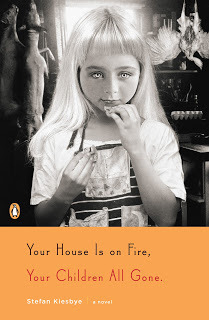
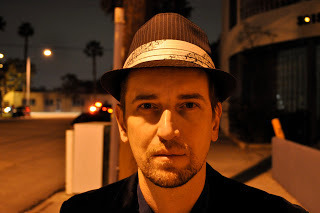
First, I dare you to look at that cover and not immediately feel spooked. Stefan Kiesbye's extraordinary Your House Is on Fire, Your Children All Gone came through my mail slot and instantly I felt unnerved. It's a genius cover and in this case you can tell a book by it's cover, because the book is THAT good. Four sinister children have come of age on the Devil's Moor, quietly telling their stories in a way that will make you more than a little nervous. But don't just take my word for it. Look at some of this praise:
[A] wicked novel . . . Stunning . . . [There is a] quiet, unnerving effect [to] Kiesbye’s Brothers Grimm–like prose. . . . An episodic, poetic, nightmarish offspring of Grace Metalious’s Peyton Placeand Ray Bradbury’s Something Wicked This Way Comes.” —Booklist
“Nearly always startling . . . Quietly savage . . . Clinically dispassionate and chilling . . . Smack[s] of shades of Shirley Jackson and Stephen King . . . In an age when ‘torture porn’ still makes regular returns to the multiplex every Halloween, it’s worth being reminded that novelists, especially gifted ones, can make the trespasses we inflict on others just as ghastly as any chain-saw massacre.” —Kirkus Reviews
“A very elegant nightmare, so appalling and so beautiful.” —Audrey Niffenegger, author of The Time Traveler’s Wife and Her Fearful Symmetry tracked down Stefan and he very graciously agreed to come on the blog and talk about his book.
I'm so honored to have Stefan here. Thank you, so much, Stefan.
You said in an interview (I'll link it) "someone has to stare." I don't think I've ever heard a better definition of what it is a writer does. Is there anything you personally would not stare at?
I was often scared as a kid, and sometimes I believe that watching people was a way of figuring out whether or not they could be threatening toward me. Then, of course, there’s plain curiosity – staring at things I don’t comprehend but am fascinated by. Yet I try not to stare at things or people I can’t learn anything from. I don’t stare to intimidate or to feast on somebody’s mishap.
Your novel is so chillingly scary. It crawls under your skin, actually. But I also think it transcends the horror genre in a lot of ways because it, on the surface, seems so ordinary in its details, and yet bubbling below is something terrifying. So let's talk about the writing process here. Was this deliberate? Did the story dictate the style? When you are writing, what's your writing process like? Was there ever a moment when you felt you were losing control of the story and you had doubts about telling it?
I wrote the first chapter of the book in a harsh Michigan winter, when we didn’t see the sun for several weeks. I remembered the winters I knew as a kid, which were mostly spent reading and eating candy, and I preferred dark tales that had the power to console some hidden corner of my heart. Your House Is on Fire, Your Children All Gone is my version of the legends and tales I soaked up as a kid, but the novel is also informed by a stark realism I discovered in American literature. I’m glad you mention that the book is not “straight” horror, but derives some of its pleasures (I hope) from the depiction of everyday cruelty and mundane violence. I tried to find a language for the world I experienced as a kid, a world in which fairy tales and superstition were tightly interwoven with neighbors’ visits or going to school. In my family, ghosts, fortune telling, and superstition were facts of life.
Somehow, the fact that the novel is set in rural Germany makes it more chilling. Do you think the book would have had the same impact if it were set in a city? How does the whole story world impact and illuminate your themes?
It wouldn’t be impossible to set a story like this in a city, but city horrors are different from those found in a village. In a city, not much stays hidden, and horrors are often mixed with panic and public displays of fear. In the village I describe, violence can stay secret, and there’s almost something contemplative about the horrors. Village scares are slow-moving affairs, and there are no police or streetlights to dispel the fear. Also, the legends of the moor would never be able to penetrate the city. They need the open, barren spaces, and the real isolation of the villages. There’s nothing hectic about village horrors. They stay with you, eat with you, sleep with you. They have all the time in the world.
The cover of the book is so eerie and unsettling. It reminded me of those Children of the Damned films (I don't know if you've ever seen them--a group of blonde, odd-eyed children were born and they could destroy people just with the power of their mind). There's something off about the girl's proportions, and certainly about her eyes, and the casual way she's eating somehow makes her all the more terrifying. Were you responsible for this cover? Did you have input?
I didn’t have any input, but I loved it immediately. It’s just a fantastic cover, eerie without being obvious. I especially love the clear print that – if held at a certain angle – seems to whisper a threat into the reader’s ear.
What's obsessing you now?
My wife and I just moved to a small town in New Mexico, and I’m beginning to learn the landscape, the legends, the snakes and stray dogs, the pick-ups, the winds that cover everything with reddish dust. For the first time in years, there are stars in my sky. Lots to stare at.
What question didn't I ask that I should have?
I’d like to say that the landscape of the book – the Northern German Devil’s Moor – does exist. The village of Hemmersmoor is my invention, but it’s not so far from the truth. What the reader encounters toward the end of the book is very real again. My parents and I discovered it by accident on one of our drives, and it seemed too casual to be threatening, and only much later did I understand its significance. So I wanted to give it that casual horror, something a small child might not comprehend and find delightful.
Published on October 05, 2012 13:05
Yona Zeldis McDonough talks about A Wedding in Great Neck, eschewing outlines and listening for the inner voice
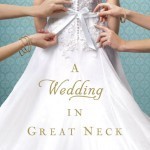
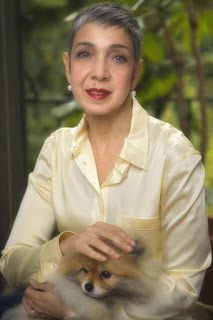
Written around the course of one astonishing wedding day, A Wedding in Great Neck is, "a tender, clever story with emotional heft," (Booklist.) Yona Zeldis McDonough is also the author of The Four Temperaments, In Dahlia's Wake and Breaking the Bank--and she's also one of my favorite people on the planet. I'm thrilled to have her here to talk about her new novel. Thanks, Yona, now let's have lunch some day soon!
What sparked the idea for your book? Is that usually the way all your novels begin? Was there anything different with this one?
I had recently read—and was very impressed by—two other books that took place in a single day. One was the masterpiece Saturday, by Ian McEwan, which I thought was truly epic in its scope and depth. The other was Helen Schulman’s powerful and moving A Day At the Beach. I was intrigued by the formal problems posed by creating a novel whose story unfolded in one day and I thought a wedding would offer a strong enough armature on which to base a plot structure of that kind. I’d never done anything like that before.
What surprised you in the writing of this novel? How do you write? Are you an outliner or do you fly by the seat of your pen?
I don’t typically make outlines--I don’t like them—and even when I have, I tend to ignore them. I want the story to gather its own momentum and to take me to places I had not intended to go. That’s what keeps it exciting for me. I always start with a voice—someone tapping me on the shoulder, whispering in my ear, saying Listen to this. It’s important that you get it down right. I wait for that voice and when it comes, I feel I am less the creator and more the conduit for something not entirely in my control. In the case of Wedding, the voice that animated the story was Lincoln’s. That was a bit of a surprise—I’m not a guy, divorced or a recovering alcoholic, and yet there he was. I loved inhabiting his soul and writing his chapters.
How has your writing and your writing day changed with each novel?
When my kids were younger, my writing life was built around their schedules—while they were in school, asleep or playing with friends. Now that they are older, that’s no longer an issue. I work almost every day, for at least part of the day. Right now I’m into working early, and saving the errands/gym time/socializing for later. I frequently write after dinner and into the evening.
What's obsessing you now?
I am now at work on another novel, Two of a Kind, which is actually an offshoot of Wedding; it involves two characters who meet at the wedding in Great Neck, and one of the Wedding characters makes a brief cameo appearance in Chapter One. Since my publisher is asking for this new book quite soon, I’d say the writing of it has become fairly obsessive! I’m also haunted by a story I started in the summer of 2011 that is set in 1947 and explores an unlikely friendship between two women—one Jewish, one Christian—and and I’m kind of aching to get back to it.
Published on October 05, 2012 08:12
October 2, 2012
Kenneth Salikof talks about Paris to Die For, the just-published Spy in a Little Black Dress, and writing what you don't know
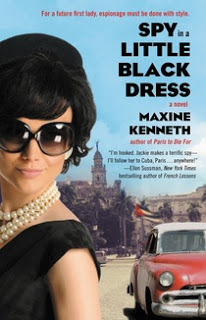
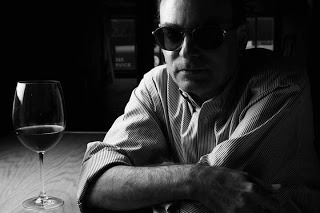
Kenneth Salikof is the author of Paris to Die For and the just-published Spy in a Little Black Dress (which has got to be one of the greatest titles, right?), both written under the pen name of Maxine Kenneth. I'm thrilled that he's here, writing about making real people into real characters. Thanks so much, Ken!
The oldest dictum of writing is, of course, “Write what you know.” But if this were true, John Carter never would have discovered Barsoom, Kavalier would never have met Clay, and Peter Lake would never have stumbled across that white horse in the mist. So a more proper corollary to this dictum (and can a dictum have a corollary?) might be: “Write what you know about what you don’t know.” I have applied this corollary in my two novels about the fictional spying career of young Jackie Kennedy by taking well-known historical figures and projecting them into fictional situations. This, I think, is a huge act of chutzpah on my part: putting words in the mouths of real life people. My first novel, Paris to Die For, for instance, features Ian Fleming. I included him because, as a thriller writer, I wanted to acknowledge the debt I owed to the man who singlehandedly (all right, he had help from John Le Carre and Len Deighton) popularized what we know as the modern spy novel. In recent years, nonfiction books, such as Ben MacIntyre’s Operation Mincemeat, have revealed Fleming’s contributions as a Naval Intelligence officer during World War II, and it was a pleasure to present him as a secret agent in all his cunning, scheming, snobbish glory. Spy in a Little Black Dress, my sequel to Paris to Die For, furthers Jackie’s adventures as a neophyte CIA agent and sends her off to Cuba in 1952 to take the political pulse of a young rebel named Fidel Castro. The real life cast of characters includes Grace Kelly, Chicago mob boss Sam Giancana, Frank Sinatra, and the shadowy espionage operative, Robert Maheu (later to become Howard Hughes’ confidant). Of course, you can’t have a novel set in Cuba in 1952 and not include Ernest Hemingway. To use this great American writer as a character in my story represents a huge act of hubris on my part. But as a lifelong reader of Papa, I reveled in the challenge of doing so, like Santiago preparing to grapple with the giant marlin in The Old Man and the Sea. I loved the way Woody Allen portrayed Hemingway in Midnight in Paris (and his perfect embodiment by actor Corey Stoll). But Woody’s creation was essentially a caricature (albeit a very witty one). I wanted my Hemingway to be more the actual man, and, through Jackie’s eyes, I show him as an artist torn between living his life and living his legend (which, ironically, he helped to create).Is this a bit too much dramatic freight for a little romantic thriller to bear? Possibly, but I felt privileged to be on the flying bridge of Hemingway’s fishing boat Pilar along with Jackie and Papa, and feeling like I was eavesdropping on their conversation.So what’s next for Jackie? Who will she meet on her next adventure? Well, I don’t want to say too much at this point, except that, inspired by a photograph I came across, I wouldn’t be surprised if she wound up sharing an espresso with Jack Kerouac and some of his Beat friends in San Francisco.
Published on October 02, 2012 12:29
September 28, 2012
Meg Pokrass and Bobbie Ann Mason write about Putin, Romney, Leda and the Swan and so much more
I'm thrilled today to have Meg Pokrass and Bobbie Ann Mason make some political mischief on my blog. Many, many, many thanks.
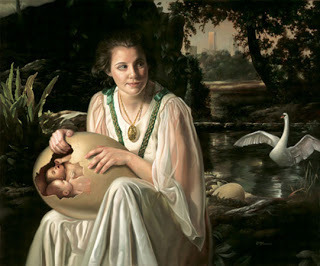
Leda and the Crane-Daddy by Bobbie Ann Mason and Meg Pokrass
Russia’s president, Vladimir Putin, created such a sensation recently in his motorized hang glider when he led six endangered Siberian cranes across an Arctic wilderness toward their winter world, that he has taken up the sport in a more serious way and is now rumored to be roving beyond Russia's borders in search of excitement. There have been sightings of Putin putt-putting above the United States.
~~
Many humans, such as Leda, have been caught up in the "feathery rush"of an erotic bird experience or two. But this one wins the most unlikely mating award. Strapped into a hang-glider and heading a flock of cranes, Vladimir Putin created a sexy rush of flight which made him unusually creative as a lover. A bird enthusiast can only imagine his leadership skills.
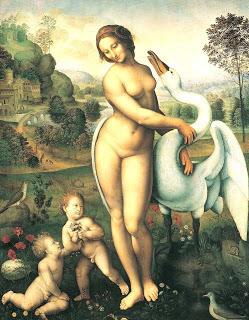
Leda, a body-builder and bather in Boulder, Colorado, was bathing nakedly between workouts when first she heard the buzz above her. Witnesses say Vladimir Putin, Russian President and Siberian Crane-Daddy, swooped down upon her, clucking and honking, adorned in white overalls and a downy hood.
The Russian Crane-Daddy stunned and immobilized Leda into submission, his feathery fingers pushing into her acupressure points and rendering her helpless and gorgeous. Witnesses describe in awe the erotic grace of President Putin twisting his long neck around Leda's iPhone to mute her cellular reception during this painting-worthy rape.
Leda, not exactly chopped liver herself, clearly confused both Putin and the cranes, though only Putin swooped. Leda swooned. The confused young sheltered Siberian Cranes passed their test of hope. Putin passed his test of manliness. Leda scored high with chronic, often fatal bird fetishism.
Since Leda's misadventures with what she believes was a clearly Republican swan, she has laid two eggs which are not covered by health insurance. So far, they have not hatched, and appear to be waiting until the U.S. Presidential election is decided. Like many American voters, the eggs seem very still and worried.
If the Republicans win, Leda says, "Once again, me and two questionably legitimate, fertile eggs will have no rights in the matter."
Even with her two eggs in limbo, Leda, a fowl-driven, erotic woman, succumbed with both repulsion and attraction to the Russian president, in his white costume and hood, with his concern for the world's many endangered species.
In her distress, she turned on the radio. Unfortunately the news did not soothe her. More turbulence was in the air.
Republican presidential nominee Willard Mitt Romney, having declared publicly that Russia is America's number one enemy, has stirred fears of a new Cold War contest. Private sources have revealed a new Romney plan to out-Putin Putin. Upon hearing of Putin's courageous and heartwarming exploit in flying a hang-glider with a bunch of birds, Romney was both inspired and challenged. Mitt was also miffed about his running mate's marathon time and felt the need to do something spectacular himself. Leading endangered cranes to the safety of Siberia, or wherever, is nothing, he mused. Romney, obviously, could have taken the cranes there in his jet, but he needed to do something more thrilling. He trusted his campaign manager to come up with something more stunning than Putin’s primitive stunts. Really, puttering around in a hang glider was rather juvenile, Romney thought.
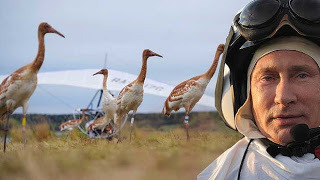
This is unofficial, but a Romney insider spoke of plans to perform a Santa Claus-and-sleigh flight from the North Pole in a new all-GPS jet sleigh. He will wear a thermal-enhanced synthetic fur-and-down Santa suit and voice-activated warming mittens with glow technology.
It will be a pre-Christmas surprise, of course, and the details are cloaked in secrecy, but there will be a campaign promise to all legitimate children in the red states to have a chance to win a time-share in a Cayman Islands condo. No handouts for the wretched. Romney identifies with the Santa image, following on the theme of red, which was so successful in the choice of his wife's $1900 Oscar de la Renta dress for her speech at the convention.
A prominent member of the Tea Party was heard to object because red could be interpreted as Communist.
And Sarah Palin said. “I can see Russia from my house and the clothes-lines are always flapping red underwear, you have no idea.”

Another party faithful warned, "If Romney is dressed up in red and flying around up there, Sarah Palin might mistake him for a communist bird and shoot him.
Back to Leda. When she heard of Romney's putative out-Putining Putin plan, she shuddered, fearful that he would swoop down on her from his jet-sleigh, his red fake-feathery arms trying to jerk her off to the Caymans for a tryst. But he would have to put up with her pleas to let her take her two swan-rape eggs along because he is, after all, pro-life, and then maybe she could have him arrested for crossing international lines with a minor, or two minors.
How to get yourself out of a rape, legitimate or not, can be trying, a vexing problem, especially when there are bird-men acting like they own the skies and can just swoop down on anybody they choose.
The swan rape was so devastating to Leda that sometimes she thinks she may have imagined the Putin swoop as well as the Romney Santa scheme, and she wonders if she should have her head examined. But she would need more health insurance for that. Meanwhile, she will watch for dark shadows falling from overhead and try to keep under cover.
Senior Associate Editor,BLIP Magazine, (formerly Mississippi Review online)Author, "Damn Sure Right"Press 53DirectorFictionaut Five Author Interview SeriesNEW ANIMATIONS BLOG
Links to my Stories“The Big Dipper” in Annalemma (Best of the Web nomination)“What the Doctor Ordered” (Pushcart nominated) from MonkeybicycleTen Microfiction works at FRIGG“Delivery” at Wigleaf“Pounds Across America” at Wigleaf“Needles” at Wigleaf“Baking” at Wigleaf“Lost and Found” from elimae selected for Dzanc’s Short Story Monty showcase (by Storyglossia)“California Fruit” at SmokeLong Quarterly“Sex in Siberia” at elimae“Separation” at elimae...buy "Damn Sure Right" at Amazon
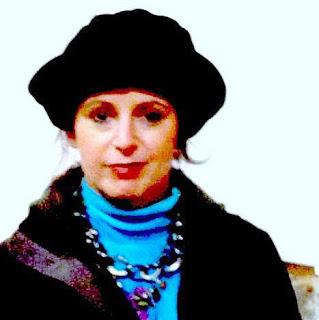
Bobbie Ann Mason, a finalist for the Pulitzer Prize and winner of the Pen Hemingway Award for First Fiction (Shiloh and Other Stories) and an Arts and Literary Award from the American Academy of Arts and Letters, is also the author of In Country, Clear Springs, and The Girl in the Blue Beret.
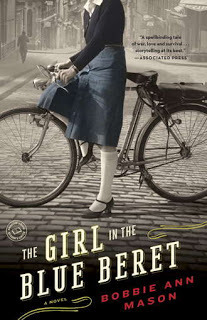
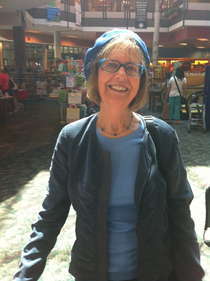
Published on September 28, 2012 07:53
Julianna Baggott talks about We are the 47% letters

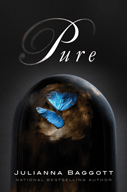
Julianna Baggott isn't just a sublime novelist (You've read Pure, right? If not, go and get it right now. Trust me on this.) She's also an activist and the originator of the website, We Are the 47%, where writers craft their own open letters to Mitt Romney. I'm thrilled and honored to have Julianna here, again.
What made me you think to do this?
I'd written my own Open Letter to Romney after watching the leaked video tape and figuring out what he meant by the 47%. That stat included my young family, when we were just starting out and didn't earn enough to trigger federal income tax. Novelist Jon Jefferson goaded me to open it up, make it bigger. And so I reached out to other writers, as a sounding board for the idea. Within 24 hours, I had letters -- from Richard Russo, Jennifer Finney Boylan, you, and many others. We started it up.
This goes beyond Romney and the election. We strive to Humanize a Statistic, One Voice at a Time.Why reach out to the writerly community? And as members of the "elite" and "smart" that Romney dislikes so heartily, do you think our message can have an affect on those who favor Romney? Can we change minds?
We started with writers because that's my immediate community -- those I knew who'd write, quickly. But we've opened it up to people from all walks of life. Alongside two Pulitzer Prize-winners, we have a union carpenter, special education teacher, designer, geologist, veterans, medical transcriptionist ... lots of voices in the mix.
What's the response been like? Will you reach out to others? How can people help building this?
In one week, we've had over 50,000 people come to read the stories. We are open to anyone who wants to represent. We don't publish all of the letters but we read them all and sometimes make editorial suggestions (mostly just to make the stories a bit shorter). You can find out how to submit at the site We Represent the 47 Percent.com. People can build it by sharing the links with friends, family, on Facebook, Twitter, and Google+. Some of these stories are so powerful and moving that some writers have had interest from literary agents. It's truly an honor to offer a place for these voices to gather.
Published on September 28, 2012 07:40
September 27, 2012
Jo-Ann Mapson talks about Finding Casey, dogs, writing, cowboy boots and so much more
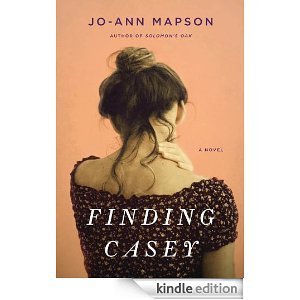
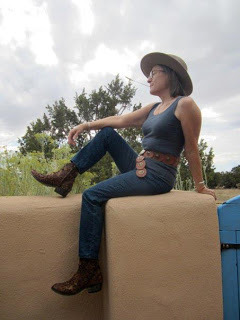
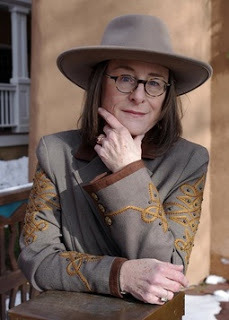
I first met Jo-Ann Mapson because I stalked her. Yep. It's true. It was the early days of the Internet and I saw her name on AOL and tracked her down, introduced myself and told her how much I adored her books. But Jo-Ann wasn't interested in THAT. She wanted to be a friend, peppered me with questions, and soon we were emailing back and forth, and managing to see each other every few years, too. You've never met anyone as loyal, kind, funny or smart. She's edited my pages, handed me both good advice and virtual tissues when I've had meltdowns, and she introduced me to Old Gringo cowboy boots!
Jo-Ann's the author of Hank & Chloe, Blue Rodeo (a CBS TV movie starring Kris Kristofferson), Shadow Ranch, Loving Chloe, The Wilder Sisters (An LA Times bestseller), the Bad Girl Creek trilogy, which includes Bad Girl Creek (An LA Times Bestseller), Along Came Mary, and Goodbye Earl, The Owl & Moon Cafe, Solomon's Oak (Winner of the American Library Association's RUSA award). and her new extraordinary novel, Finding Casey, will be published by Bloomsbury USA and UK in October 2012. And don't miss the book trailer for it!
Jo-Ann is part of the core faculty and co-creator of the University of Alaska Anchorage's low residency MFA Program in writing. She's married to the artist Stewart Allison, whose cartoons grace this page. And wait, that's not all! She's also working on a new novel, Owen's Daughter, which will be out in 2013. Thanks so much, Jo-Ann, for being here. My blog is always your blog.
Tell us about Finding Casey, which offers characters from a previous wonderful novel. Do you find you carry your characters with you? Do they ever get put to rest?
Finding Casey is not the book I imagined writing after I finished Solomon’s Oak. That story of a girl who never returned from walking her dog had been sitting in the writing place in my heart (see diagram), gestating for maybe 12 years? Solomon’s Oak was supposed to quiet that down. Instead, I slowly began to realize that I had written the first book so that I could write another, which became Finding Casey.
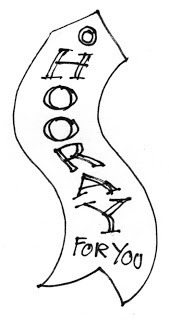

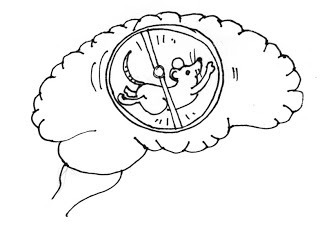
And duh, don’t we writers know that? The idea for the next book germinates in the one you’ve just finished. For me, it shows up at the 2/3 mark when I’m rewriting, when I’m about to throw in the towel. A little shining carrot: Finish this and you can have me.
Remember when Patty Hearst was kidnapped and then found? I do. Some years back, I watched a news anchor well up with tears, saying, “Some good news for a change: Elizabeth Smart has been found, safe, and reunited with her family.” We’re human, and we hope for happy endings. But for every good outcome there are hundreds of tragic outcomes. As a writer, though, my wheels begin turning (see diagram), I wondered, now what? What is the life of Patty/Elizabeth like?
Then Jaycee Dugard was found, this long-term kidnap victim everyone thought was dead for years. I began writing Finding Casey that very day. I read books on kidnapping, Stockholm syndrome, sociopaths, true crime accounts, courtroom transcripts, and at times my head was not a good place to be. The writer Sherry Simpson told me that how she wrote her first book was learning to keep looking, without flinching. When Jaycee telephoned her mother, she said, “Mom, come quickly.” That tore my heart. An aspect of the story that resonated with me was reuniting families with horse therapy. I’m an old urban cowgirl and rode horses until my back began disintegrating. I’d worked a summer job with juvenile offenders. Lesson 1: here is a halter, now go catch a horse. These inner city badass boys were humbled. They learned to ride. They very quickly bonded with their horses. They reminded me of kindergartners sometimes; so accepting of the animal world, communicating in all the ways they couldn’t with the real world. When the 6-week class ended, they cried.
The program won an award. Then it folded.
I often think of the year I did nothing but ride horses. All my friends were getting published but me. I was depressed; this was my husband’s order: Go ride your horse every day. That year was my breakthrough. I had a new world to explore. Not everyone there spoke English. Nobody there spoke horse, but I was trying to learn. Our plug ugly Appaloosa helped my son through a tough adolescence. When they died, I mourned for years. Some experiences you want to stop thinking about because they hurt. But if you don’t turn away, there are lessons that will change you. Then the sorrow turns bittersweet. It sticks like a piece of caramel lodged in your heart.
I had just arrived at the real story in Finding Casey. That lesson. No one can run away from the past, though we try hard to. That kind of pain can eat you alive unless you do something with it. Finding Casey stands on its own two feet. But it also will (hopefully) cheer some to learn what happens to the Vigils after Solomon’s Oak. Glory and Joe were meant to be, but it’s hard work to build a family out of pieces. They come together like pieces of a quilt, but one of the squares is missing. You’ll find out how they deal with that in Finding Casey.

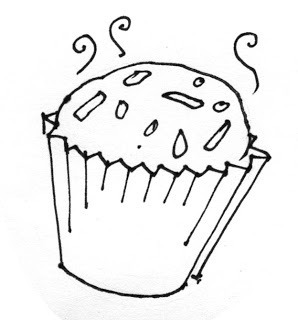
What was it like revisiting the characters?
Heaven. A story never really ends. I purposely write books that when you shut the cover, you’ll find yourself wondering what the characters are doing today. Who dried the dishes? What sidetracked the character, sending her on an entirely different track? Was there a storm? Certainly they adopted a few dogs…or horses. Growing up, I had no real ally in my family besides books. Only a thin veneer separates the characters in my life and books. They’re with me wherever I go, like one of those ladies who carry a dog in her purse.
You write so much about how people can be broken by loss and need, yet your characters also have this resilience of spirit that tugs them to higher ground. Can you talk about that, please?
Whoa, that’s a hard question, Caroline. My writing and my life have are spent in study of this question: After something has broken you, how do you go on?
Resilience of spirit is even harder to define. I have struggled with depression my whole life. I began to write to use my depression to make something good out of it. I have been bucked off a multitude of times. Like the teacher said in the movie “Precious,” write it out. Life is so surprising. You can fall in love at eighty years of age. There is always a dog that needs rescuing. Chances are good that another person as lonely as you is out there. Everyone who gets back on the horse is a hero. I see people who have done that and I want to celebrate them as characters.
What's your writing life like? Actually, I'd love it if you would talk about your career as a whole. What surprised you about being a professional writer?
What surprised me is that it happened at all. I never thought I was good enough to deserve publication. A few self-esteem issues here. When it happened, you’ve heard me say this before, I had just finished my MFA, with no publications during that time, I came home from the residency to find out I had gotten fired from my crappy job, and I was watching All My Children, crying and dusting when the phone rang. It was my first editor, telling me that my agent had laryngitis, and that she wanted to buy my book.
I pinch myself every day. To be paid money for my favorite thing to do! More than once! More than 10 times!
Just this past week I won the University of Alaska Anchorage’s Chancellor’s Award for Research & Creative Activity. Being nominated alongside scientists and important fields was as far as I expected it to go. Had I known I’d win, I would have taken the red-eye to AK and made a fool of myself crying on stage because this was REALLY BIG for the Creative Writing Department where I’ve taught for 11 years. And to me, having been told that I would never be hired tenure-track because I had “written too many books.” Validation, respect, to be publically deemed to be part of something that big?
Blew me away.
I write every day in my little office. Around 2:00 P.M. the dogs start in to remind me that dinner will be in three hours. They bring me live mice. They “bury” dead gophers on the couch. They bark at ravens. It’s amazing I can get anything written at all. These days I am working in the daytime and at night. I am wailing on the first draft of this new book so I can have months to revise it.
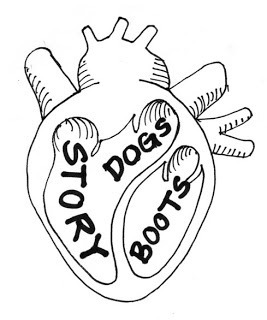
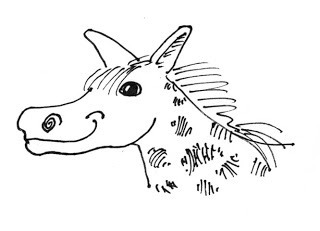

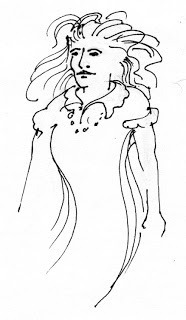
You've lived in a few places, Alaska, New Mexico, for two, and the sense of place really infuses your work to the extent that it's almost a character in itself. Do you think place impacts character or character impacts place, or both? And why and how?
When you grow up in Southern California, you have the Pacific Ocean. We used to rent a beach house for a month every summer. It fosters the sense of having a second identity. When I traveled to Northern California, I realized there were much bigger parts to this state than the one I was living in. It was possible to live in beauty, as the Navajo say. I went to Alaska when I was eighteen, and knew someday I wanted to live there.
My dad died just before I got married, and my mom was left raising two teenagers, so I ended up in Southern California for 47 years. I talked my husband into quitting everything and moving to Alaska and we lived there 8 years. I enjoyed every moment of it—snow, giant spruce trees, wildlife in the front yard, and talk about ocean! There is a frontier mentality that exists to this day. It’s a great place for a woman who wants to buck the system a little. I was hired as a term contract professor to teach in their fiction MFA Program. I thought nothing could top that. This is the job I’ve always wanted. Six years later, my colleague Sherry Simpson and I were sitting at a table every day of the week for a year creating the low-residency program. My contract was 60% time, which allowed professors to live elsewhere, returning to AK every summer. I said to my husband, OK, if you want to move, this is the time. He said he wanted to live in Santa Fe. It was my turn to say yes.
It’s a different kind of pretty here. Prairie and high desert climate, ravens, jackrabbits, coyote central, a big chorus every night. All that finds its way into story because if I had my druthers, I’d be out in it. It’s hard to meet people, but my former student and cherished friend Judi Hendricks (http://judihendricks.com/) lives here. Writers manage to find each. Michael McGarrity lives down the street, and close by, Sally Denton, and David Morrell. We have an indie bookstore, Collected Works, built where there used to be a jail, one that Billy the Kid busted out of. We’re all tucked inside out houses writing. I love the solitude, but I miss Alaska, which is ironically, now where our son is living.
What's obsessing you now?
I’m writing Owen’s Daughter, which features some of the Finding Caseycharacters, but also Owen, Margaret, Peter, and Skye (Owen’s daughter) from Blue Rodeo. Another story I have been waiting 20 years to tell. I love the fact that just now in Chapter 6, they will miss each other by seconds. Because eventually these folks, who haven’t seen each other for 10 years, are going to meet. And when they do, their worlds blow up. Love is all you need? Well, that and Lorazepam.
And I am obsessed by ghosts, and tinkering around with trying a mainly omniscient narrative, and reading about 1912 Santa Fe. This place is filled with spirits, there’s a ghost tour. So my ghost, Dolores, arrives in Finding Casey, and here she is again in Owen’s Daughter, so I’m giving her some rein, seeing where she takes me.
What question didn't I ask that I should have?
I don’t know how do you do it, Caroline, teach, write, raise a wonderful son, stay married to the amazing Jeff, and have time to interview writers, to make space for them to be heard. Bless your heart a million times over. So here’s my question: Which Old Gringos will end up in your closet next? When can we go out for a cupcake? My treat.



Published on September 27, 2012 08:08
September 26, 2012
Caren Osten Gerszberg and Leah Odze Epstein talk about Drinking Diaries: Women Serve Their Stories Straight Up, getting sloshed, honesty, living one block apart and more
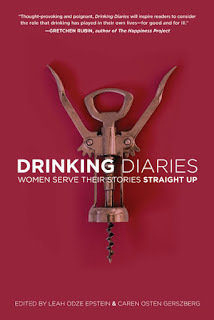
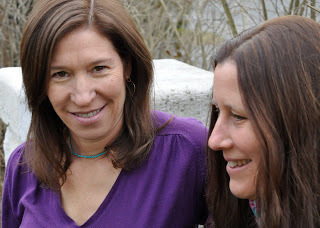
So, what's the deal with women and alcohol? Why is it cool for Mad Men to have their cocktail but sad when women hit the bar? Editors Caren Osten Gerszberg and Leah Odze Epstein put together a fabulous collection of essays all about the topic of drink. I'm thrilled to have them here. Thanks Caren and Leah!
What gave you the idea to do an anthology like this? And can you talk about your fabulous Drinking Diaries Blog, how that came about, as well?
We both have mothers who struggled with alcoholism and we both love to drink. These contradictions proved ripe for exploration and discussion, and we found that there was no forum—other than a church basement—for women to share their stories, good and bad. So we started the blog, soliciting stories from all kinds of women of varied ages, perspectives, experiences and backgrounds. We ended up with a treasure trove and wanted to create something lasting, so we decided to put together an anthology of original essays about alcohol’s impact on our lives.
Do you think there's been a reluctance in the past for women to talk about their relationship with alcohol? How do you think that relationship differs from the ones men have with drink? Or does it? And if it does, why does it?
We’ve noticed that the relationship has been dichotomized—either you are hiding your problem and feeling shame or you’re sipping cosmopolitans or doing shots with girlfriends and joking about it online. But what about all the people in the middle—the rest of the 64 percent of women who drink (according to the latest Gallup poll)?
At our reading at the Strand Bookstore, author Daphne Merkin brought up the idea of the guy at the bar alone, having a beer and how acceptable that looks. The whole male bravado, “Mad Men” thing. Whereas the image of the woman at the bar alone reads as sad.
Did any of the essays surprise you?
Jacquelyn Mitchard’s essay, “Thank you for Pot Smoking,” is about her preference of pot over alcohol for her kids—that was surprising and a great rant. Jane Friedman made a great intellectually-reasoned case for getting sloshed on a regular basis in “Drinking as Genuine Vocation.” And Asra Nomani pulled out all the stops in “Mother of All Sins,” by admitting she’s a Muslim who drinks.
What I loved so much was the bravery and no-holds-barred honesty of the essays. Was there any coaxing involved?
Not really. The honesty was there—the writers wouldn’t have signed on if they weren’t willing to share. But there were a few writers who we asked to dig a little deeper. And those that did thanked us afterwards.
What are you both working on next? What's obsessing you now and why? And I have to ask, I see you both live in Westchester County with a husband and three children--is this a typo or are you living wonderfully parallel lives?
Leah is going to return to writing young adult fiction, most likely about daughters of alcoholics, and she is also trying to convince Caren to do a teen Drinking Diaries. At the moment, she is obsessed with pink wine, because it’s like a happy mood in a bottle.
Caren is working on a few freelance articles and writes regularly on her travel blog. She is undoubtedly obsessed with her two dogs, and her recently begun meditation practice.
Yes, we live one block apart and each have three kids. We joke that we are now married.
What question didn't I ask that I should have?
Where can you get the book? Oh—good question. Anywhere books are sold and at IndieBound and Amazon.--
Published on September 26, 2012 09:59



